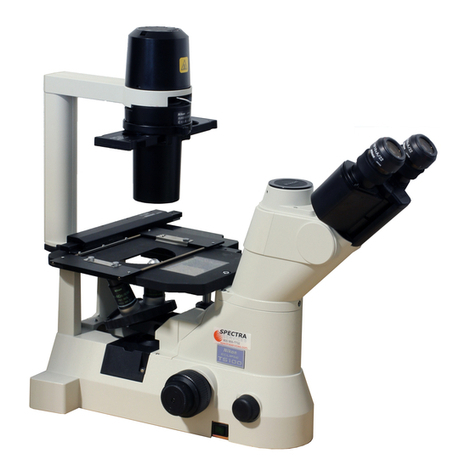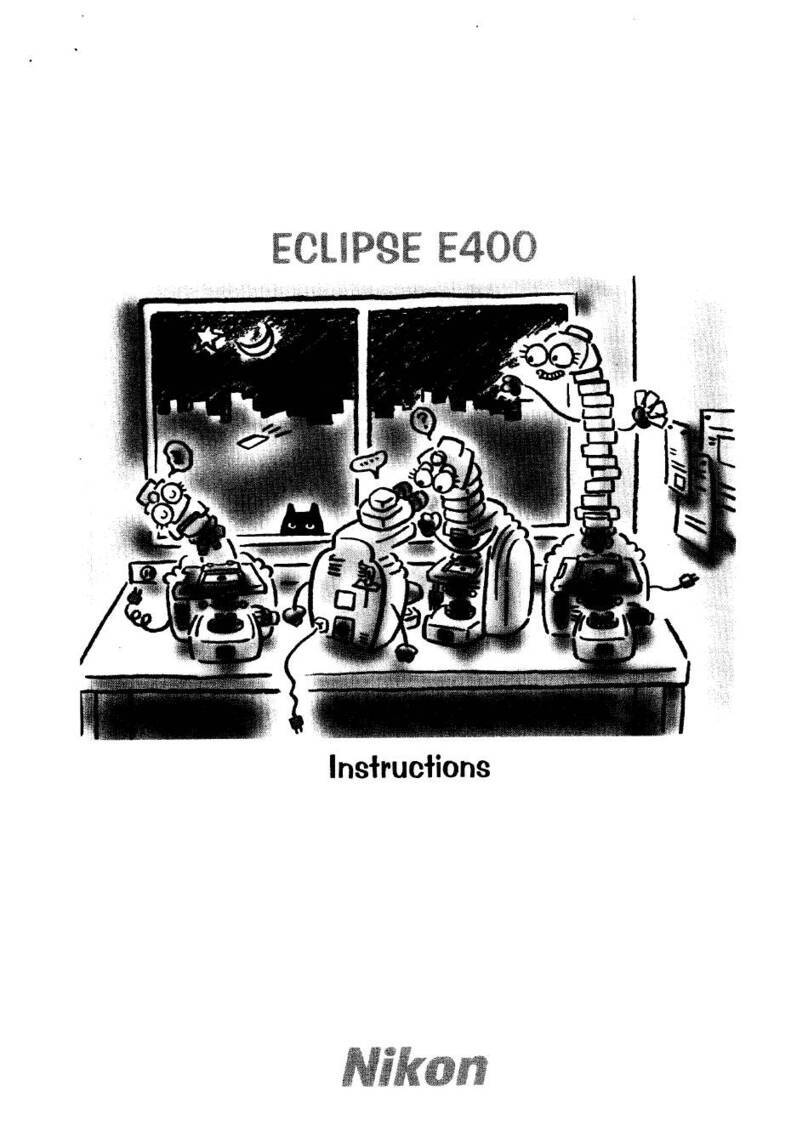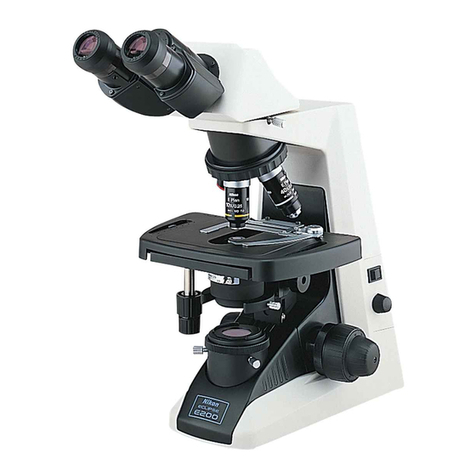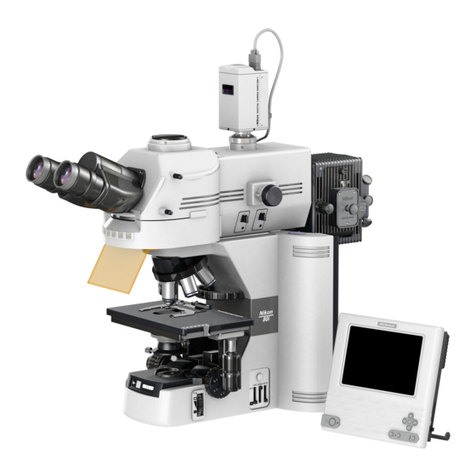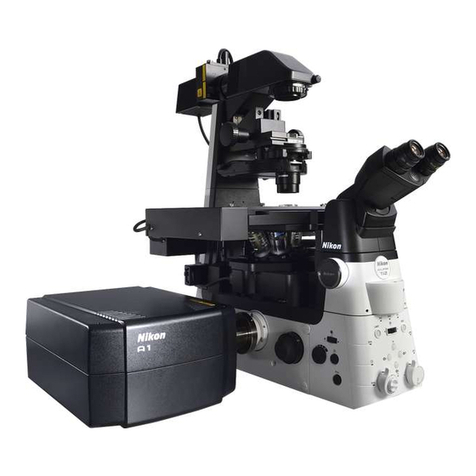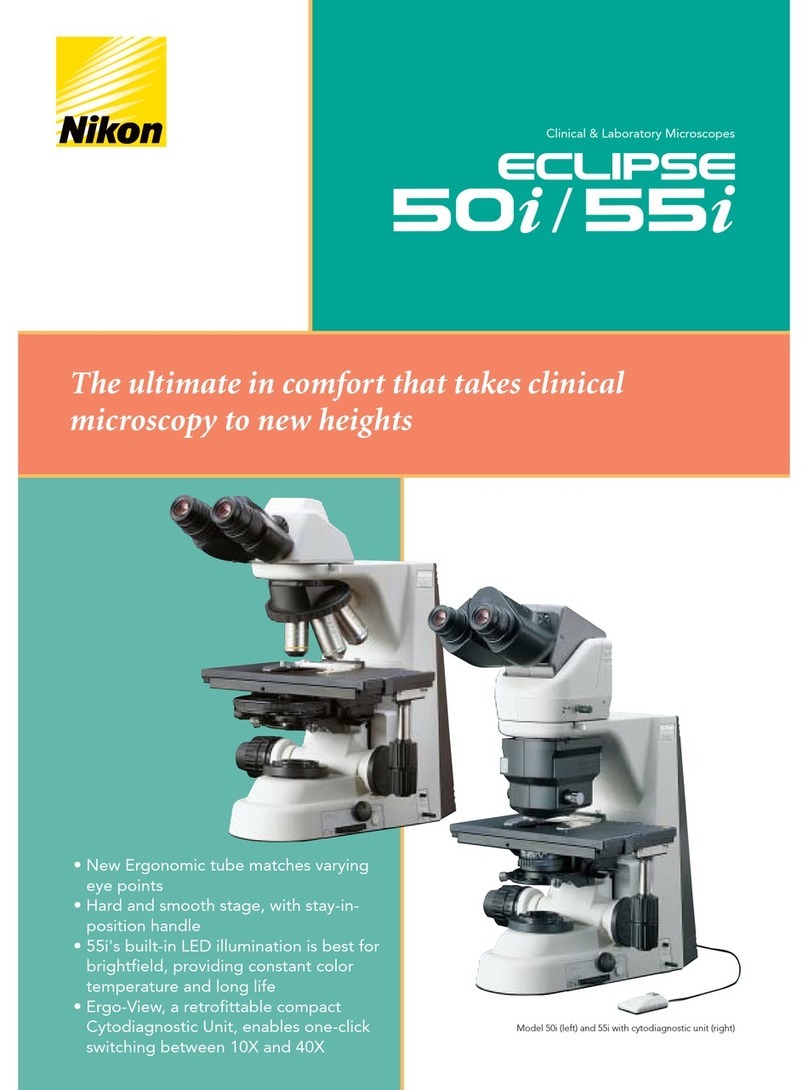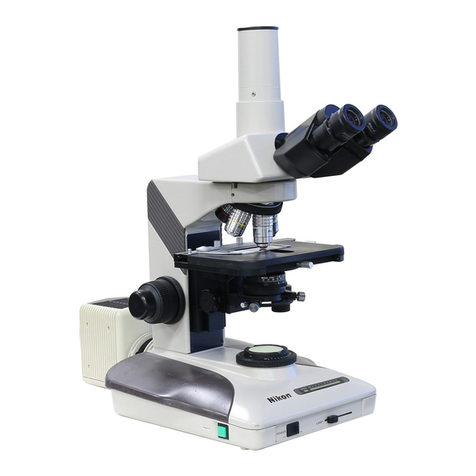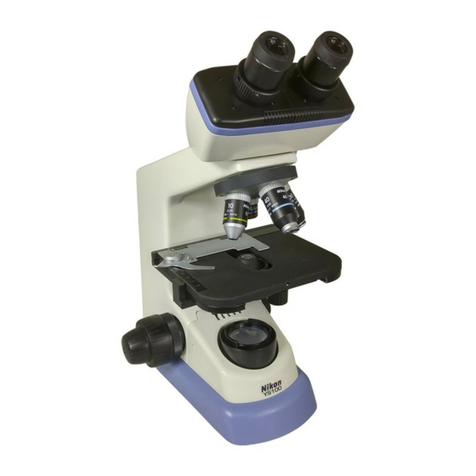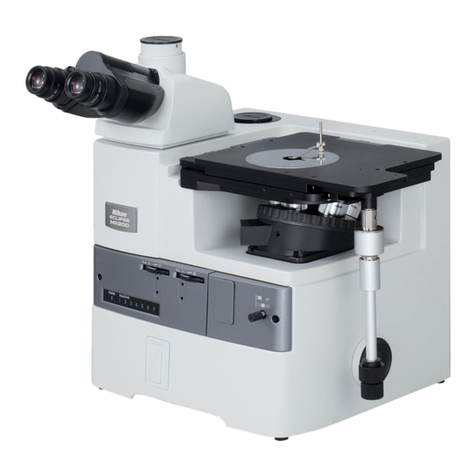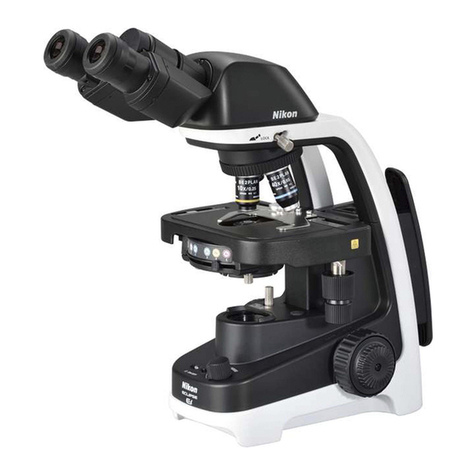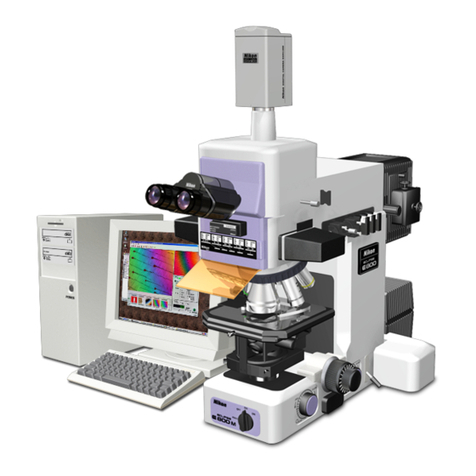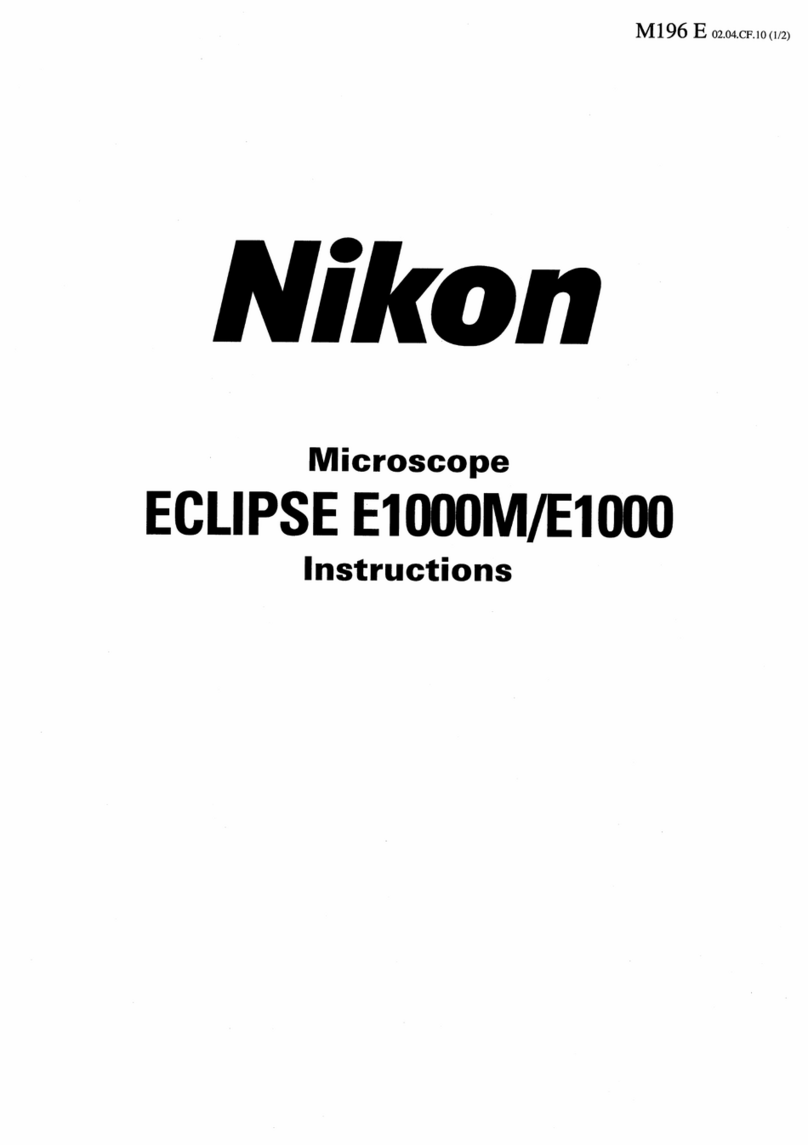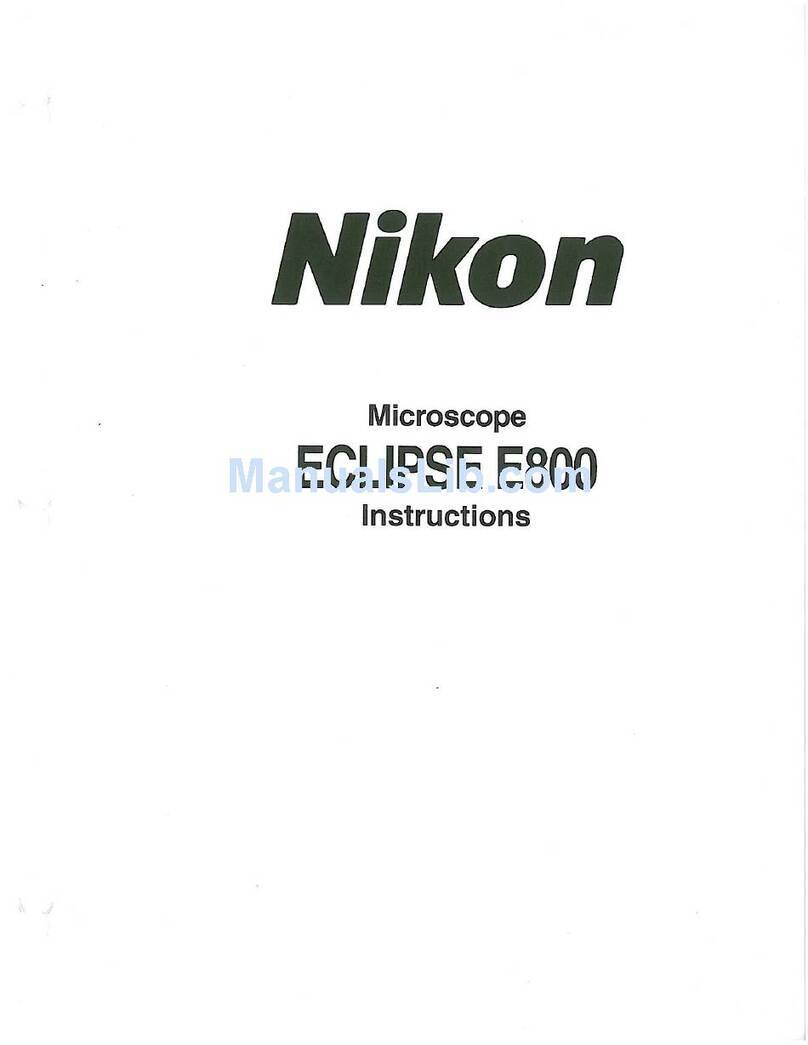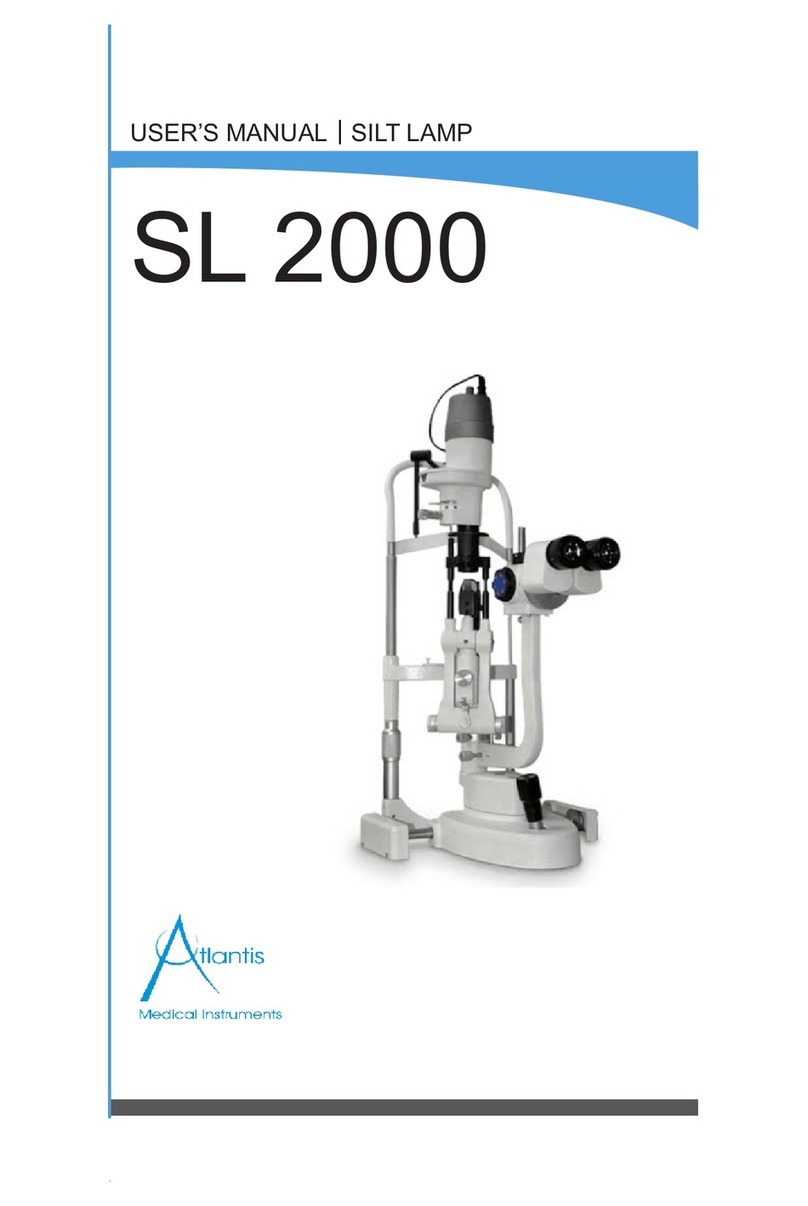
Contents
iv
13.1 Switching Filter Cubes ...................................................................................... 32
13.2 Selecting a Filter Cube .....................................................................................33
13.3 Important Notes for Epi-Fluorescence Microscopy ..........................................33
14 Remote Operation .................................................................................................. 33
15 Capturing Images ................................................................................................... 34
15.1 Procedure for Capturing Images ......................................................................34
15.2 Tips on Microscope Settings for Photomicroscopy...........................................35
16 Internally Saved Information................................................................................... 36
Functions and Operations of the Devices...........................................37
1 Zooming Body ........................................................................................................ 38
1.1 SMZ18 Zooming Body ...................................................................................... 38
1.2 SMZ25 Zooming Body ...................................................................................... 39
2 Focus Units............................................................................................................. 41
2.1 P2-FU Focus Unit ............................................................................................. 41
2.2 P2-MFU Motorized Focus Unit .........................................................................42
2.3 P2-FMDN Focus Mount....................................................................................45
3 Nosepiece .............................................................................................................. 46
3.1 P2-RNI2 Intelligent Nosepiece .........................................................................46
4 Objectives............................................................................................................... 47
5 Bases, Stand, and Stages ...................................................................................... 48
5.1 P2-PB Plain Base .............................................................................................48
5.2 P2-DBL LED Diascopic Illumination Base ........................................................48
5.3 P2-DBF Fiber Diascopic Illumination Base ......................................................48
5.4 P-PS32 Plain Stand .......................................................................................... 49
5.5 P-SXY64 XY Stage ...........................................................................................50
5.6 C-SSL DIA Sliding Stage ..................................................................................50
5.7 C-TRS Tilting Stage ..........................................................................................50
6 Tubes...................................................................................................................... 51
6.1 P2-TERG 100/ P2-TERG 50 Trinocular Tilting Tube ........................................51
6.2 P2-TL100 Trinocular Tube L .............................................................................51
7 Episcopic Illuminator .............................................................................................. 52
7.1 P2-CI Coaxial Epi Illuminator............................................................................52
7.2 C-FDF Flexible Double Arm Fiber Illumination Unit..........................................53
7.3 P2-FIR Ring Fiber Illumination Unit .................................................................. 53
7.4 P2-FIRL LED Ring Illumination Unit .................................................................53
8 Diascopic Illuminator .............................................................................................. 54
8.1 P2-DBL LED Diascopic Illumination Base ........................................................54
8.2 P2-DBF Fiber Diascopic Illumination Base ......................................................56
8.3 P-DF LED Dark Field Unit.................................................................................57
8.4 P2-POL Simple Polarizing Attachment .............................................................57
9 Epi-Fluorescence Attachment................................................................................. 58
9.1 P2-EFLI Epi Fluorescence Attachment.............................................................58
9.2 P2-EFLM Motorized Epi Fluorescence Attachment..........................................59
10 Remote Control Device .......................................................................................... 61
10.1 P2-RC Remote Controller.................................................................................61
10.2 AZ-FSW Foot Switch ........................................................................................63
10.3 AZ-PCR Photo Release....................................................................................65
11 Control/Communications Device and Relay Device ............................................... 66
11.1 P2-CTLB Control Box ....................................................................................... 66
11.2 P2-CTLA Control Box .......................................................................................68
11.3 P2-RLY Relay Box ............................................................................................69
11.4 P2-RLYC Relay Cable ...................................................................................... 69


